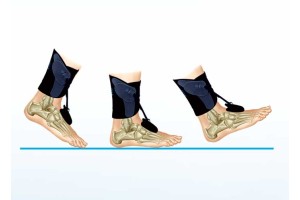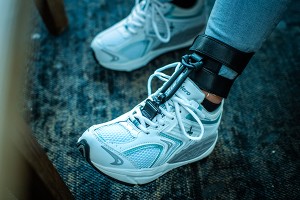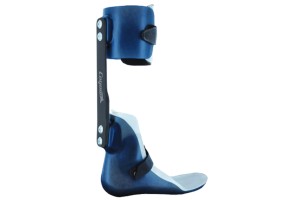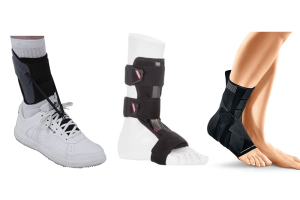Frequently asked questions
Question 1: I train 3 times a week however I have not seen any change to my body shape, what am I doing wrong?
Answer: There could be a variety of factors in play here, one could be the intensity at which you are training, if you are not pushing yourself your body will be in its “comfort zone” and won’t be under enough stress to begin to change shape. Another factor that could affect training would be diet, check out our diet tips blog to see a very basic breakdown of diet advice. The final factor could be the method of training, if you train the same way for example always strength/ weight training the body can adapt and become use to the exercise, to see if this is the limiting factor switch up your training and do a bit of muscle endurance or bodyweight training for a week or so and see if this begins to have the desired effect.
Question 2: How and why do muscles get bigger?
Answer: muscles get bigger when doing any type of training that puts a greater load on the muscle than it can current cope with. This could be anything from an activity or movement you don’t normally perform to lifting heavier weights than u have in the past.
The muscles grow bigger by tearing slightly and repair bigger and stronger to be able to cope with the excess load being put on them. Don’t be worried by the word “tear” it is not the same as an injury tear and instead it is the body’s natural way of becoming stronger. If you over train or push yourself too hard this is when a more serious injury or tear can occur. The most common version of this would be training pain or “DOMS”.
Question 3: What is the most common injury at the ankle?
Answer: There are many injuries that can occur around the ankle, one of the most common is an inversion sprain at the ankle joint. This is when the ankle rolls inwards and excess strain is put on the surrounding tissues located on the outside of the ankle. This usually results in damage or tearing to the ligaments on the outside of the ankle joint, most commonly the Anterior Cruciate Ligament (ACL). This is usually accompanied by further damage to various soft tissue structures around the area resulting in an inability to weight bare (stand) on the limb and a large amount of swelling. It can also result in a fracture and may require an x-ray to confirm.
Question 4: How often should I train each week for strength?
Answer: The most accepted amount of training for strength would be 2 – 3 days a week if you are starting out, as you become more proficient at training this could go up to every second day when training full body strength. This means that your body has time to recover and grow stronger on the rest day. If you train too often e.g. every day you are at risk of over training. This can actually have a negative effect on the body and you can regress (get weaker). This is because the muscle is repairing and growing slower than you are tearing them.
You can train everyday however you will have to do a different training modality, e.g. strength then cardiovascular training. Another way would be to train the body in isolated segments, e.g. upper body then core then lower body. This allows the other parts of your body to recover as you utilise a different part. It should be noted that the rest is as important if not more important than the exercise itself as this is where the gains (improvement) from training is applied to the muscle.
Question 5: What’s the easiest way to compare power to weight ratio between different people?
Answer: If you don’t have access to a lab and specialised equipment, the easiest way to compare power to weight ratio would be body weight training. The reason behind this is you are lifting your own body weight so the muscles are directly proportional to each individuals’ size. If you take press ups, a smaller person will have smaller muscles and can only do 20 press ups before failing. A larger individual may have more weight but their muscles are also bigger as they tend to be in proportion. They may only be able to do 20 press-ups as well, this means the 2 individuals have roughly the same power to weight ratio despite having a difference of say 40kg in weight. This is obviously a simple way of testing and will not be entirely accurate compared to a lab test. It should also be noted that the way in which you perform the exercise will determine what modality you are comparing. If you do normal press ups it will be more muscle endurance that will be being tested. If you do explosive press-ups (hands clearing the ground on each push) this will be more power.
Question 6: How often should I train if I want to maintain the same strength level.
Answer: This is a bit tricky to answer as everyone is unique however if you have reached the level of fitness you are happy with and want to maintain that level, the easiest way to keep what you have achieved is to continue the current programme (training) you are doing and at the same weight and reps. This will eventually become the norm for your body (easier to perform) and as such will cause you to plateau, or in other words halt improvement. You should not lose any level of fitness doing this method and should remain at the same fitness level.
Question 7: What is a better method of training to burn calories, cardio or weights.
Answer: There are many different benefits to each method of training. If we are only looking at calories burned, then the majority of the time weight training can burn up to 3x more than cardio. However, there are some exceptions to this rule. As an example bouncing on a trampoline as a cardio exercise will burn a lot more calories than a run (also cardio).
Question 8: I have been running for 20 years now and have recently developed some issues in my knee after a long run, I have moved from the countryside into the city recently and ever since the move this issue has developed. Could you provide any insight into why this pain has developed?
Answer: The knee pain could be down to a variety of issues however one of the most common modalities that can cause knee pain in runners is the surface that they are training on. I would need more information on the injury to give better insight however off the information I have I would suggest that if you ran on grass or trail routes in the past and are now running on tarmac then it will most likely be the increased shock put on the joint from the tarmac. An easy way to check is to find a grass or trail rout to run on and the pain should begin to ease and dissipate. If it does not, then an assessment of the knee might be necessary.










